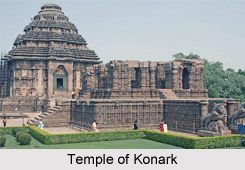 Kalapahad was the title of a Muslim general of Mughal governor Sultan Sulaiman Khan Karrani of Bengal.
Kalapahad was the title of a Muslim general of Mughal governor Sultan Sulaiman Khan Karrani of Bengal.
Rajiv Lochan Ray as Kalapahad
Rajiv Lochan Ray, an Odia general of Gajapati Mukundadeva, the last emperor of the empire of Kalinga-Utkala, convert to Islam. After conversion to Islam he took a Muslim name but is popularly known as Kalapahad.
Life of Kalapahad
Kalapahad was instrumental in conquering parts of Odisha for the Afghans of Bengal.
After the defeat in the Battle of Tribeni, Sulaiman Khan Karrani was forced to make peace. He realized that he would never be able to conquer Bhurishrestha unless he could defeat Rajiv Lochan Ray. Sulaiman Khan Karrani invited Rajiv Lochan Ray for negotiations in his palace. Rajiv Lochan Ray met and fell in love with the daughter of Sulaiman Karrani and willingly converted to Islam. According to other sources, Sulaiman Karrani planned to have Rajiv fall in love with beautiful and charming daughter by including her in meetings and feasts with him. Kalapahad offered Rajiv Lochan Ray to convert to Islam to which he offered to convert his daughter to Hinduism and marry her. However, King Gajapati Mukunda Deva was opposed to such a matrimonial alliance and decreed that conversion to Hinduism was illegal. Enraged, Rajiv Lochan Ray converted and married Karrani`s daughter taking the name of Kalapahad (Black Hill - the destroyer). He led Karrani`s revenge over Mukundadeva and attacked Odisha. He defeated Mukundadeva and sacked major towns and religious places of Odisha including Hijli, Cuttack, Jajpur District, Sambalpur District, Konark District, Ekamrakhsetra District and Puri District etc. in 1568
Fall of Konark Temple and Puri
The most popular theory about the root of the fall of Konark temple rests with the Kalapahad, the general of Bengal Sultan Sulaiman Khan Karrani. According to some accounts Kalapahad was formerly a Hindu Kayastha officer; however he had converted to Islam. According to Afsanah-i-Shahan of Shaikh Kabir Batini, he was a Batini Afghan. According to the history of Odisha, Kalapahad invaded Odisha in 1568. He destroyed Konark temple, as well as a number of Hindu temples in Odisha. The Madala Panji of Puri Jagannath temple describes how Kalapahad attacked Odisha in 1568. Including Konark temple, he broke most of the images in most of the Hindu temples in Odisha. Though the stone walls are of 20 feet (6.1 m) to 25 feet (7.6 m) thick, Kalapahad somehow managed to displace the Dadhinauti and thus caused the tower to collapse. He also damaged most of the images and other side temples of Konark. Due to displacement of the Dadhinauti, the tower gradually collapsed and the roof of the Mukhasala was also damaged, due to the stones falling down from the temple top.
Tomb of Kalaphad
Kalpahad was buried in Sambalpur, now in Sambalpur District of Odisha. The large number of tombs believed to be those of the dead soldiers of Kalapahad is located in a mango grove near Samaleswari College building on the bank of river Mahanadi in Odisha.
Related Articles
History of India
Medieval History of India
Medieval History of Bengal
History of West Benga
Odisha, Indian state
Puri, Odisha
Temples of Odisha
Cities of Orissa
Sun Temple
Konark Temple



















